From perruque to pinkie

Conservators Judy De Roy, Claudia Aerts and Sam Huysman will spend the next few months cleaning stains and discolorations and filling losses. They will also deal with unsightly traces of previous restorations. Because the four busts are due to be given a prominent place in the new museum and the gentlemen in question are no longer in top condition right now. The conservation process is scheduled to finish in the spring of 2021.
But who are these men exactly? And what’s so special about their portraits? What do they have in common and how do they differ? And why do these likenesses tell us as much about fashion as they do about innovations in art? You can find the answers here.
Four official portraits in marble
First some introductions. From left to right, allow us to present:
> Luis de Benavides Carillo, Marquis of Caracena, as portrayed in 1644 by Artus Quellinus I
> King Philip V of Spain as encountered by Jan Pieter Baurscheit I at Versailles in 1700
> A fabulous-looking Maximilian II Emmanuel, Elector of Bavaria, by Willem Kerricx in 1694, and
> Juan Domingo de Zuniga y Fonseca as sculpted by Lodewijk Willemsens in 1675.
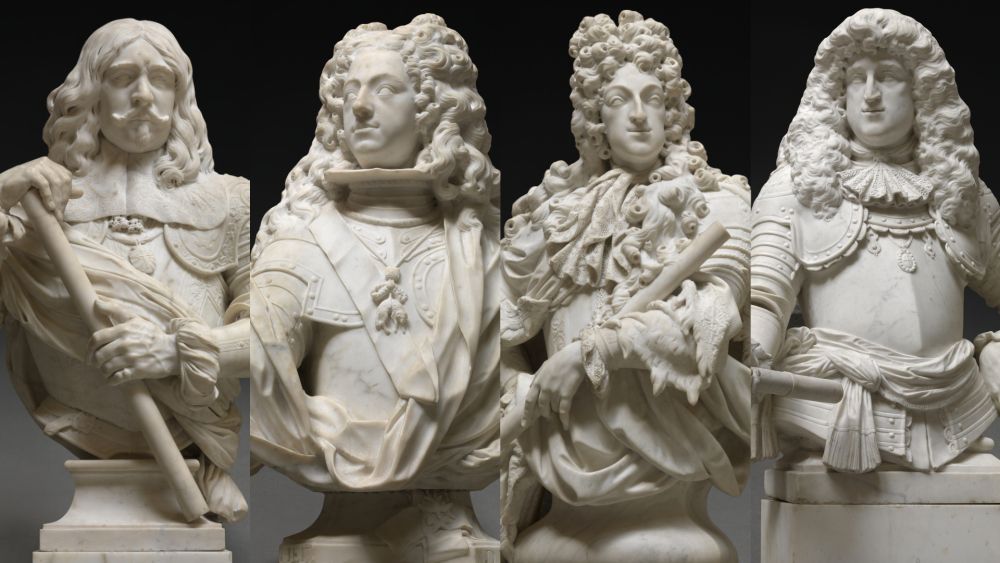
The four busts side by side
The City of Antwerp commissioned Baurscheit to sculpt Philip, potential heir to the Spanish throne, in marble for its portrait gallery in the State Chamber at the Town Hall. The three other busts were commissioned from different sculptors by the Guild of St Luke in Antwerp. They represented figures who had either supported the foundation of the city’s academy or had provided their backing in a dispute with another guild. These busts originally stood in the large painting room in the guild hall, where the choice of sculptures rather than paintings gave the respective noblemen a more physical presence.
As king of Spain, the French sovereign Philip V also ruled Antwerp from 1700 to 1724. The other three men were former generals who later served as governors of the Spanish Netherlands, and so their political influence extended beyond the Guild of St Luke. It never hurts to flatter the ruler or their representative artistically...
Tasteful armour
Each of the four men is shown wearing armour, military style. The question is why, given that armour had disappeared from the battlefield in the mid-17th century. On average, armour weighed 40 kilograms, which was not enough to protect the wearer from firearm rounds. And military tactics were changing anyway.
All the same, leaders still liked to be portrayed wearing armour, which continued to represent their soldierly authority. Even where ornamental armour followed the rules of regular men’s fashions and the new designs were more refined than protective. Each of the artists successfully captured in marble both the elegance and robustness of the respective armour and, by extension, the men wearing it.
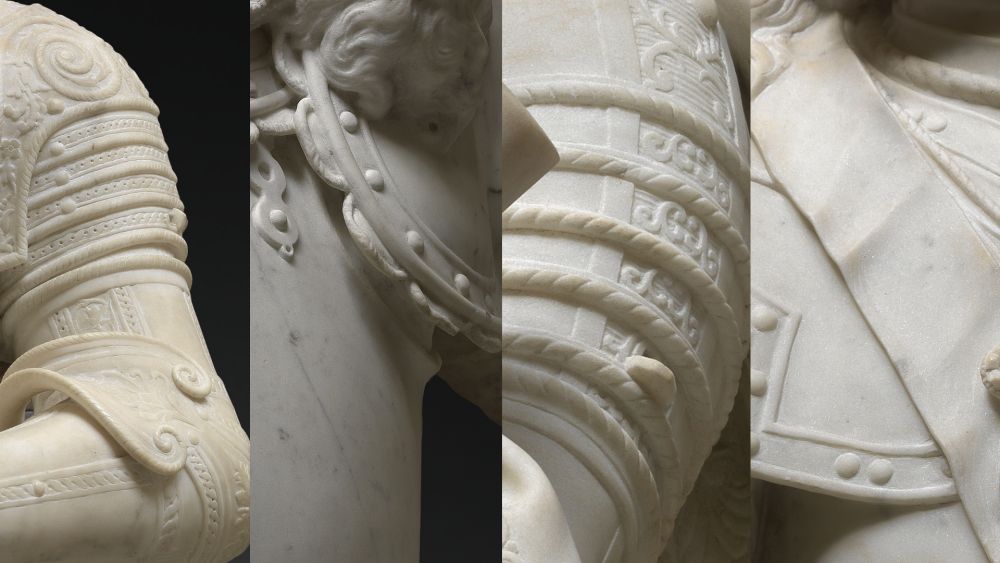
Left to right: Quellinus, Baurscheit, Kerricx, Willemsens - Details of the different suits of armour
You can’t go wrong with lace
It is hardly surprising then that military men did not only don their breastplates for a portrait: fashionable armour needed to be set off by a trendy jabot – a lace ancestor of the necktie, which was sewn to the front of the shirt. The accessory also gave sculptors an opportunity to show off their skills.
Willem Kerricx went to particular lengths to provide the Elector of Bavaria with every possible fold and ruffle. This was also a rare chance for Kerricx to show what he could do with the elegant French style, since he normally spent his time crafting luxurious church furnishings. Not only is this bust Kerricx’ masterpiece, marble would never be sculpted so gracefully in Flanders again.
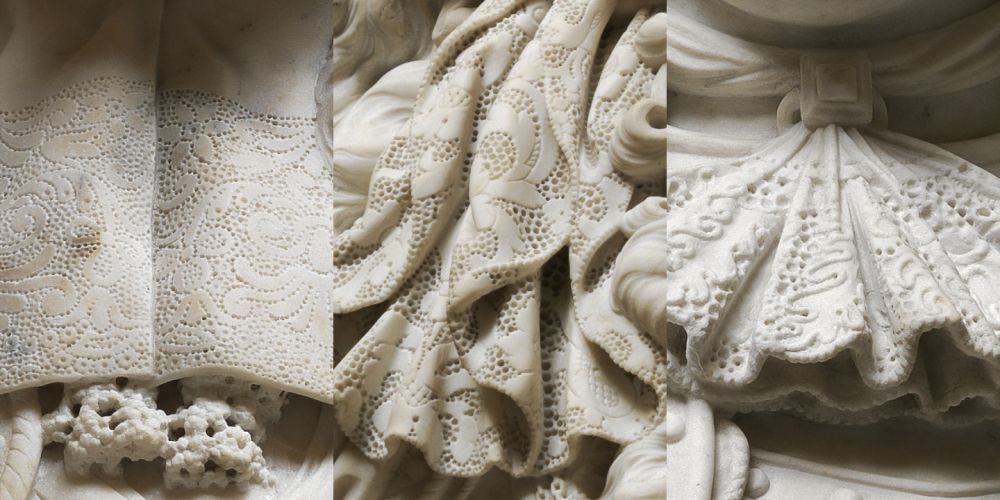
Left to right: Quellinus, Kerricx, Willemsens - Details of the lace ruffles or jabots
Wigging out
Luis Carillo was probably the only one of the four who didn’t go for a stylish perruque. The three other gentlemen were only too happy to choose the most fashionable coiffure for men between 1665 and 1715: the allonge wig. Conceived by King Louis XIII of France to conceal his premature baldness, it was perfected by Louis XIV.
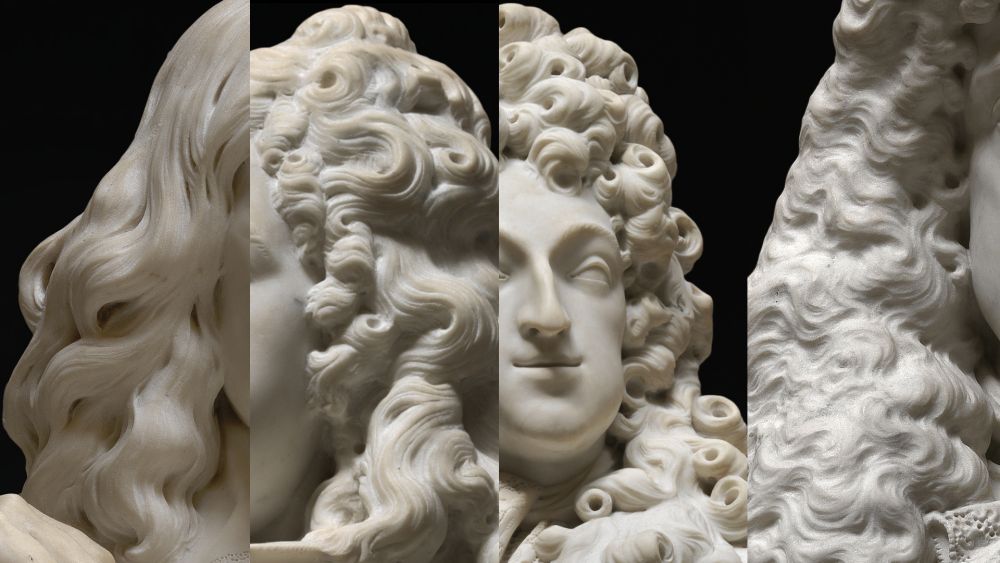
Left to right: Quellinus, Baurscheit, Kerricx, Willemsens - Details of the different hairstyles
In 1673, that royal fashionista par excellence even had it adopted as wig of state, from which moment on, no self-respecting European nobleman could afford to be left behind. The allonge wig also proved its worth concealing the hair loss associated with syphilis – a disease that was rife at the time.
Willem Kerricx made the curly wig a tour-de-force too – it even seems to wave in the breeze! In Willemsens' bust, by contrast, the hair is a solid roof that would certainly make any umbrella superfluous. Then again, Willemsens was an architect as well as a sculptor...
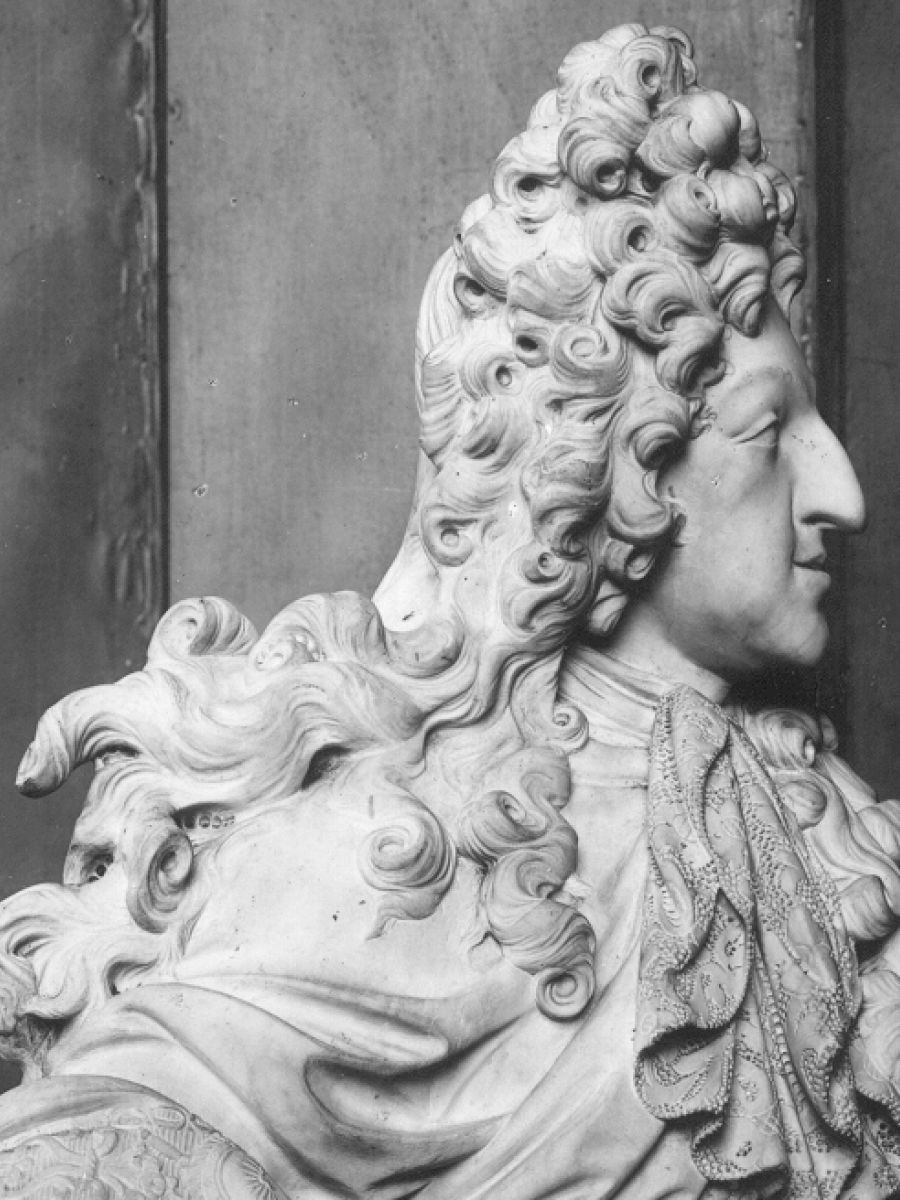
Maximiliaan II Emmanuel, keurvorst van Beieren - Willem Kerricx
Mirror, mirror on the wall...
Luis Carillo’s hands too are rendered more naturalistically than those of his fellow soldiers. (The king of Spain has no arms, so he doesn’t count.) Looking at these photographs, you can see straight away why Juan Domingo’s bust needs to be conserved: he’s missing his little finger. It is not clear when it was lost.
There is a plaster copy of the bust in the collection of the Royal Museums of Fine Arts of Belgium (RMFAB) in Brussels, thanks to which the restorers will be able to reconstruct the missing pinkie. 3D scanning was used to map the plaster finger in Brussels, allowing a mould to be made from which a plastic replacement can be produced. Why plastic and not marble? so that future generations will be able to tell straight away what has been restored. Today’s conservators don’t compete with artists: they want to ensure that we can enjoy these magnificent sculptures just as their makers intended.
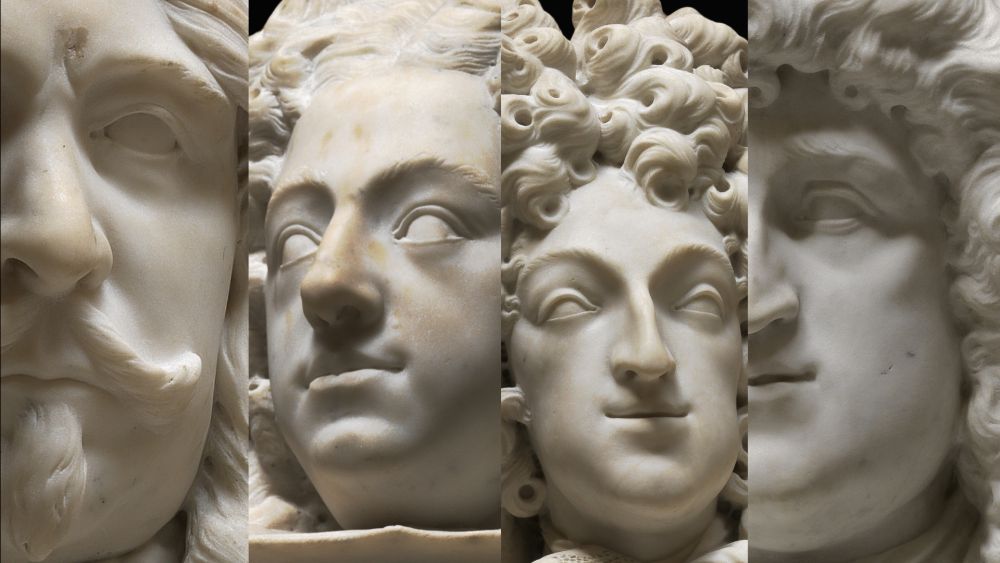
Left to right: Quellinus, Baurscheit, Kerricx, Willemsens - Details of the faces
A show of hands
Luis Carillo’s hands too are rendered more naturalistically than those of his fellow soldiers. (The king of Spain has no arms, so he doesn’t count.) Looking at these photographs, you can see straight away why Juan Domingo’s bust needs to be conserved: he’s missing his little finger. It is not clear when it was lost.
There is a plaster copy of the bust in the collection of the Royal Museums of Fine Arts of Belgium (RMFAB) in Brussels, thanks to which the restorers will be able to reconstruct the missing pinkie. 3D scanning was used to map the plaster finger in Brussels, allowing a mould to be made from which a plastic replacement can be produced. Why plastic and not marble? so that future generations will be able to tell straight away what has been restored. Today’s conservators don’t compete with artists: they want to ensure that we can enjoy these magnificent sculptures just as their makers intended.
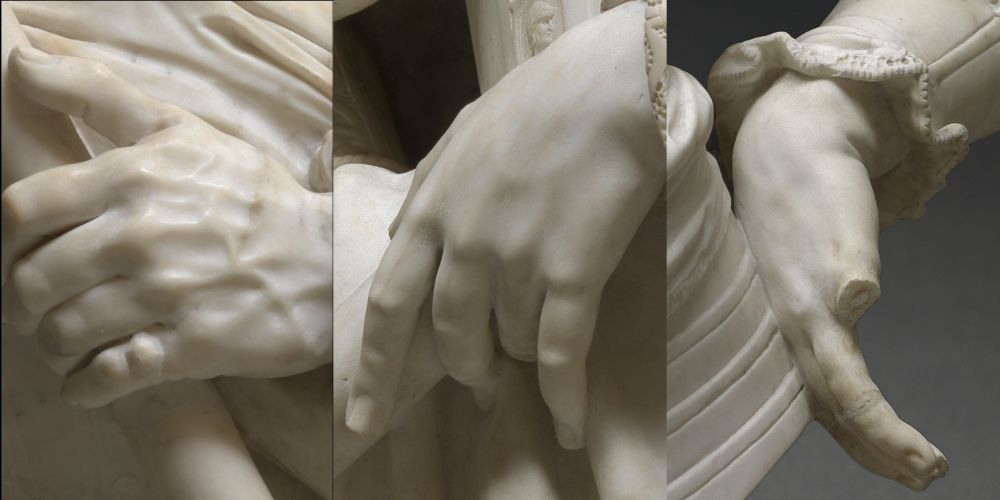
Left to right: Quellinus, Kerricx, Willemsens - Details of the various hands
The museum has been able to conserve these busts thanks to the financial support of the Bailliet-Latour Fund.




